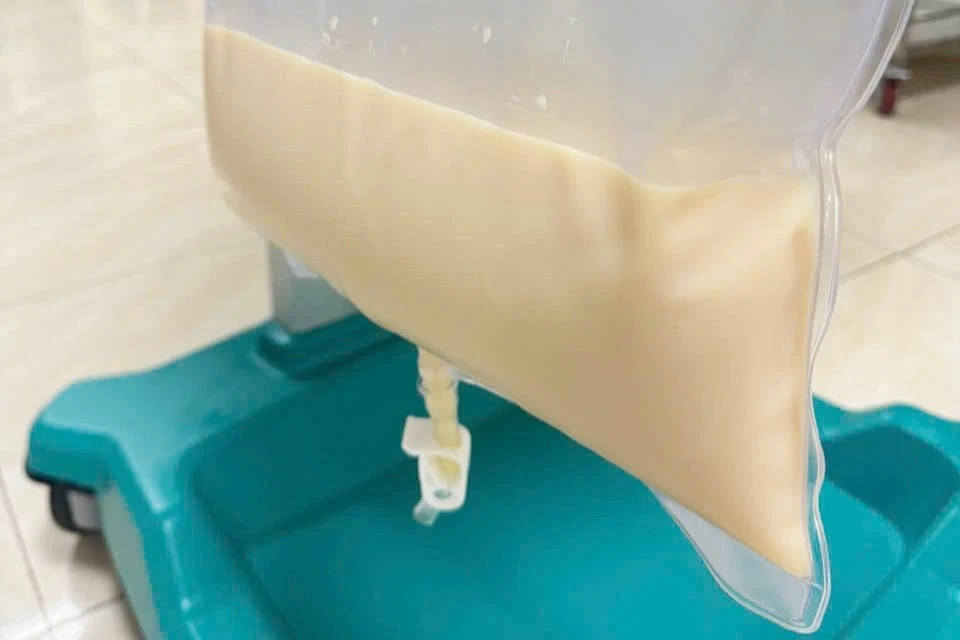The patient had a history of high triglycerides, also known as lipid disorder, but hadn't sought treatment. He regularly consumed about 250 ml of alcohol daily and had a diet high in fat. Tests at the Cam Khe Regional Medical Center revealed his triglyceride level was 182.1 mmol/L, nearly 80 times higher than normal. A CT scan revealed severe acute pancreatitis.
Doctors immediately performed plasmapheresis. After two hours, about 500 ml of milky white plasma was removed. The patient's condition improved, his pain subsided, and his test results returned closer to normal.
 |
The patient's milky white blood plasma upon admission. Photo: Hospital provided. |
Acute pancreatitis has many causes, with about 7% attributed to high triglycerides. Excessively high triglyceride levels can block capillaries in the pancreas, leading to insufficient blood supply and tissue damage. This can result in tissue necrosis and acidosis, hallmarks of acute pancreatitis. Additionally, triglycerides react rapidly with pancreatic lipase to form high concentrations of free fatty acids. These can poison pancreatic cells, causing local damage and triggering acute pancreatitis.
Dr. Nguyen Thanh Thuy, Deputy Head of the Emergency - Intensive Care - Artificial Kidney Department, advises individuals with high triglycerides to seek medical treatment, maintain a healthy diet, and limit alcohol and fatty foods. Regular checkups are crucial to monitor triglyceride levels and prevent serious complications such as acute pancreatitis, heart attack, and stroke.
Thuy Quynh












